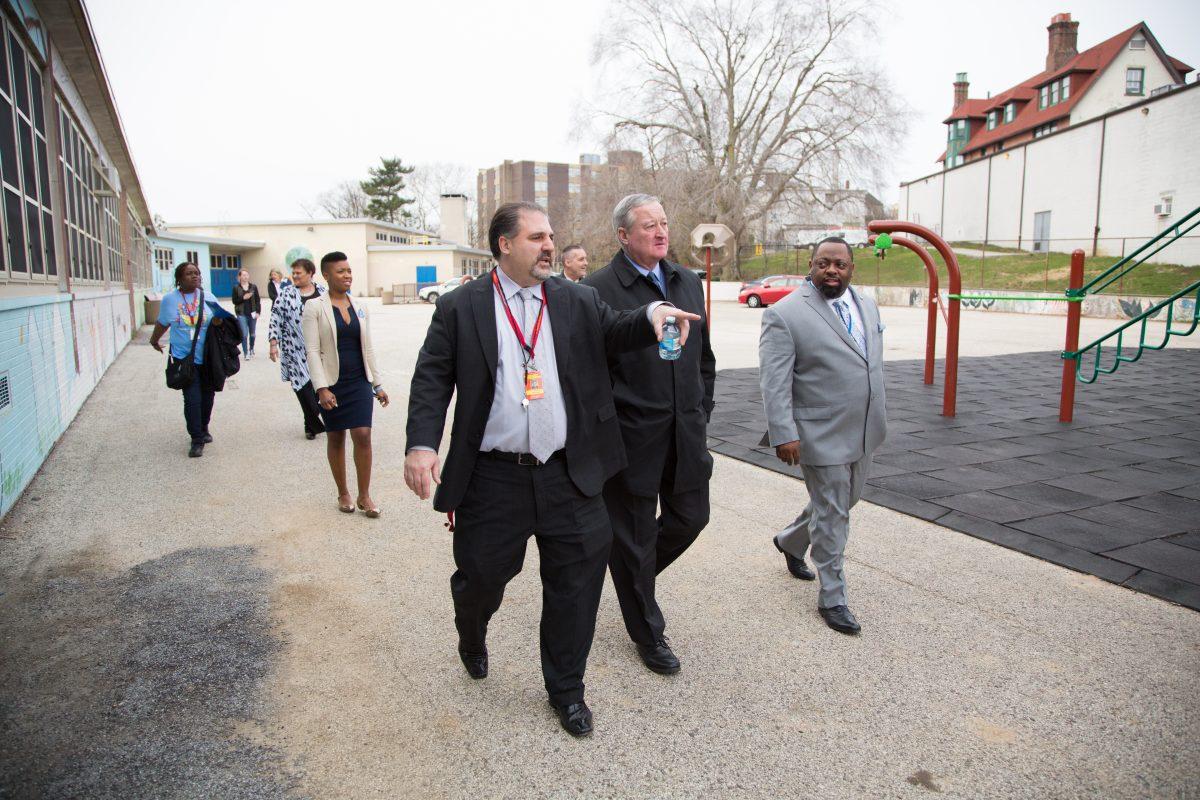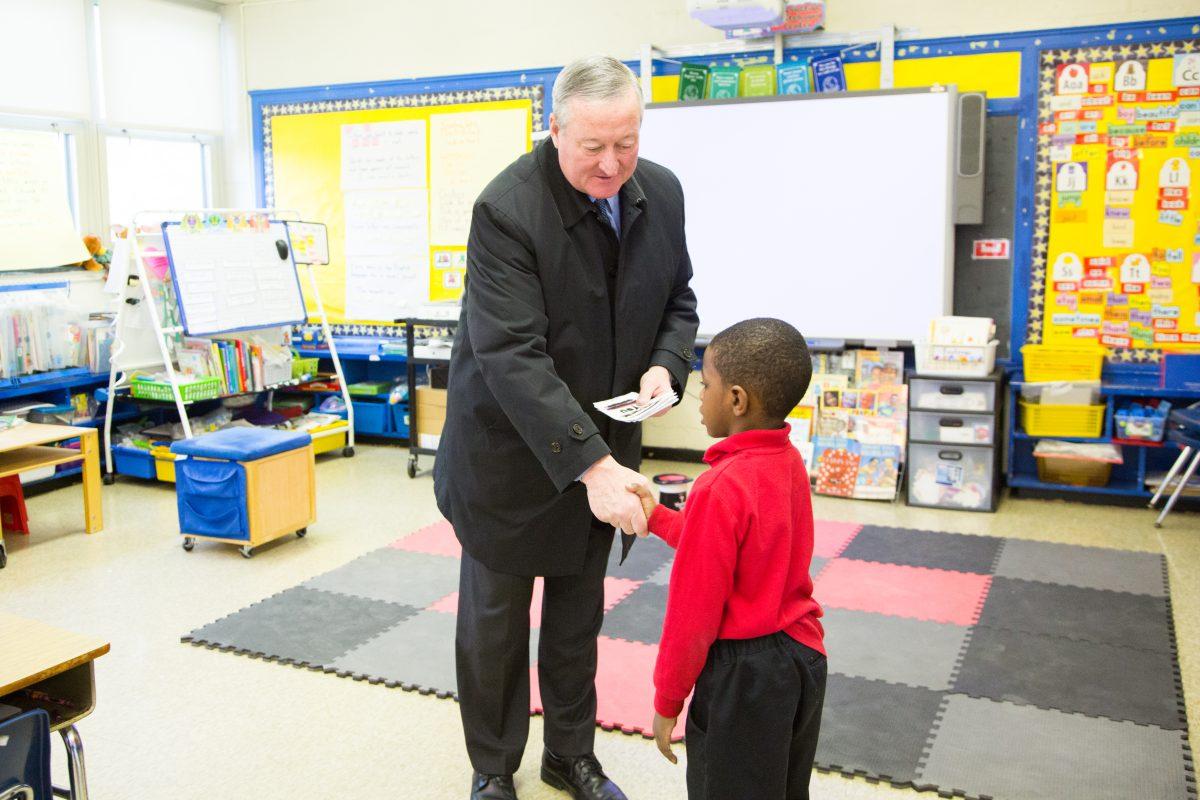Gompers presents priorities of community school program
Phillip DeLuca, principal of Samuel Gompers Elementary School, stood in the school’s newly renovated library, speaking to a crowd of principals, educators and government officials, including Mayor Jim Kenney, on April 9.

Not long ago, the school was slated to close, according to DeLuca.
“I remember when they said, ‘DeLuca, what are you going to do next year when your school is closing?’” DeLuca said. “‘Well, first of all,’ I said, ‘It’s not closing.’ And I said, ‘I plan on being here’.”
Since being named a community school by the Mayor’s Office, Gompers has now received much-needed resources.
After an initial period of surveying the needs of the students, parents, teachers and community, the school has highlighted its priorities. Now, according to Rennie Parker, community school coordinator at Gompers, they’re ready to make those priorities become a reality.
The community schools program is part of an initiative started by Kenney to help revitalize Philadelphia public schools and identify the community’s most pressing needs. It’s seen major success at the schools that it’s been rolled out in so far according to the coordinators.
St. Joe’s has had a longstanding connection with Gompers, which sits on the base of Hawk Hill at the corner of Wynnefield Ave. and North 52nd Street.

Aimee Terosky, associate professor of educational leadership, said the community school designation magnifies the university’s ties with Gompers.
Terosky works as a liaison between St. Joe’s and the elementary school, holding a position on the advisory board for Gompers as well as being a community school member.
“It [the community school recognition] will definitely secure our partnership with St. Joe’s,” Parker said. “It will bridge the gap between St. Joe’s and Gompers having more priorities in regards to our physical activities, our after-school programs as well as our mental health and mindfulness. We’re all fighting for our students, fighting for our children and St. Joe’s has been a tremendous support.”

Terosky highlighted a few of the most recent collaborations: the University Student Senate is helping to create a student council at Gompers, and the Kinney Center has been running autism support professional development workshops for teachers.
“There’s something going on here between St. Joe’s and Gompers every day,” Terosky said. Terosky is especially excited about a new project that St. Joe’s communications students proposed.
“We have a [communications] class coming here to take pictures of St. Joe’s students and Gompers students forming hearts with their fingers to put on that fence on the playground between the two schools. What makes me most excited about that project is that the St. Joe’s students came up with it on their own.”
Parker emphasized that Gompers is trying to tighten the relationship with St. Joe’s.
“It’s been a great unofficial partnership, so we’re looking to have it officially a partnership this summer,” Parker said. “We’re looking to close the gap and make St. Joe’s our official partner.”
Being a community school will allow Gompers, and the other 12 schools with the designation, to improve classroom education as well as cater to the needs of the school and surrounding community as a whole, according to DeLuca.
“Educating a child is more than just curriculum, more than just instruction,” DeLuca said. “We could be doing everything right, but if we don’t reach that child because we haven’t met their needs in the ways that community schools are allowing us to do, we’ll never teach the whole child.”
Kenney believes educating the youth of Philadelphia is the most efficient way of decreasing the nearly 26 percent poverty rate in the city.
“It’s all about education, so this is the most important room in the city right now and rooms like this throughout our school district,” Kenney said as he sat in the Gompers library. “There’s nothing more important that we do than this.”
















































